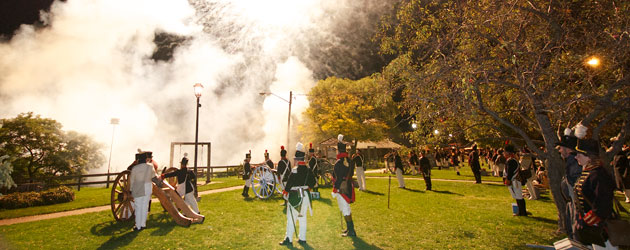
Bringing history back to life
American re-enactors in Youngstown, NY, commemorate the 200th anniversary of the War of 1812 with a mock bombardment across the Niagara River into Fort George, Canada.

American re-enactors in Youngstown, NY, commemorate the 200th anniversary of the War of 1812 with a mock bombardment across the Niagara River into Fort George, Canada.

We have sailors who love their jobs and are dedicated, but it adds another dimension when we have the best equipment possible.

[caption id="attachment_2491" align="alignnone" width="300"] PO1 Lindsay Stohl is the third generation of women in her family to serve in the military.[/caption] In some families, the tradition of military service has been passed from father to son for many generations. However, the Stohl family has started their own tradition with three generations of women serving in the Canadian Forces. Currently, there are two family members serving at sea with the Royal Canadian Navy. PO1 Lindsay Stohl currently serves as an Information Management Director and senior Naval Combat Information Operator on board HMCS Regina, while her sister, PO2 Jaime Stohl sails with HMCS Ottawa as a Naval Communicator. Their family’s tradition of military service began in the 1960s with their Great Aunt, Flight Lieutenant Judy Poole, who was a dietician in the Royal Canadian Air Force. “She was my mother’s idol,” says PO1 Stohl. “I believe that it was her positive example that led my mother to join the CF in 1972.” The Stohl’s mother Melody Lowe, a Supply Technician, was the second generation of the family to choose a military career. Her mother’s non-traditional career choice made an impression on her daughters at a young age. “There was a sense of pride that she was out in the world doing something that, for most of my school years, not many women were doing.” The example of naval service made a significant impact on the career choice of PO1 Stohl. “I wanted to be just like her,” she says. She knew from a young age that she wanted to follow in her mother’s foot steps and she joined the military immediately after high school graduation just two years after her older sister Jaime. “I grew up with the lifestyle and loved hearing about her adventures…and some of my Mom’s military friends...

[caption id="attachment_2488" align="alignnone" width="300"] Diver supervisor PO2 Scott Ensor, boat driver LS Tom Amos, and divers PO1 Donald Morris, MS Nick LePage and LS Steve Musgrave depart Lyngsbaek Pier in Ebeltoft, Denmark, to conduct harbour clearance operations. All members are from Fleet Diving Unit (Pacific) except LS Tom Amos who is from FDU (Atlantic).[/caption] Clearance divers from CFB Esquimalt took a dip in the temperate waters off Denmark last month as part of ongoing global relationship development.Six clearance divers took part in Danish Exercise Northern Coast 2012 (DANEX/NOCO), a multinational exercise that focused on international operational cooperation.“From an operational stand point, it gave us a chance to see how the other teams work,” says Lt(N) Demetris Mousouliotis, team leader for the CFB Esquimalt clearance divers. “They’re used to very different environments than we are. They have adapted, and we can learn from those adaptations.”Dive teams arrived in Frederikshavn on Denmark’s northern coast before heading to the harbour town of Hevring for the first phase of the exercise, and then on to Slipshavn for the operational phase.“For both exercises we were tasked with clearing a pier of IEDs [Improvised Explosive Device] and a harbour of underwater mines,” says Lt(N) Mousouliotis. “We used Vanguard Robotic Assessment equipment to inspect potential IEDs and secure the pier. A lot of our equipment, like the hook and line kits, are to ensure we can keep personnel as far from the explosive as possible.”After securing the pier, the team took to the water. Clad in Canadian Clearance Diving Apparatus re-breathers, they first skimmed the surface before diving for underwater mines.During the exercise, Canadian dive teams were able to observe the Danish, American, and Latvian teams.“I learned that our procedures are more or less the same, especially when it comes to diving,” says Lt(N) Mousousliotis. “The details...
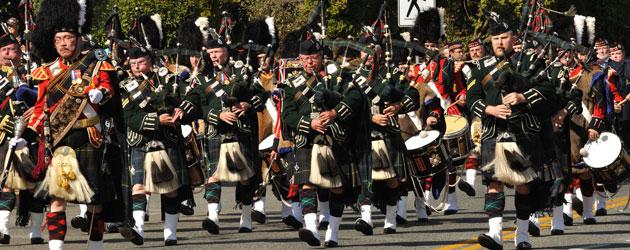
Drum Major Gary Louis (far left), of The Canadian Scottish Regiment Pipes and Drums leads the Freedom of the City Parade through the streets of Nanaimo to celebrate the 100th anniversary of the Regiment.
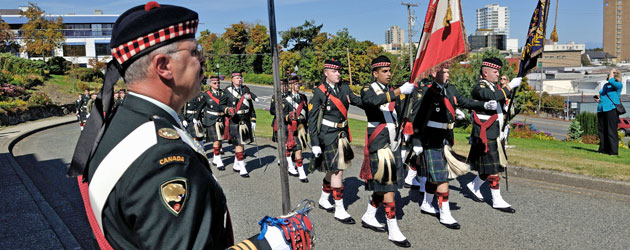
LCol Eric Boucher, Commanding Ofifcer of The Canadian Scottish Regiment (Princess Mary's) watches the Colour Party march past during a Freedom of the City Parade in Nanaimo to mark the unit's 100th anniversary.
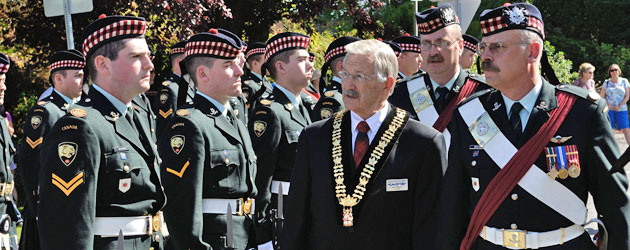
Nanaimo Mayor, John Ruttan, inspects members of The Canadian Scottish Regiment (Princess Mary's) during the unit's Freedom of the City Parade, which marked its 100th anniversary.
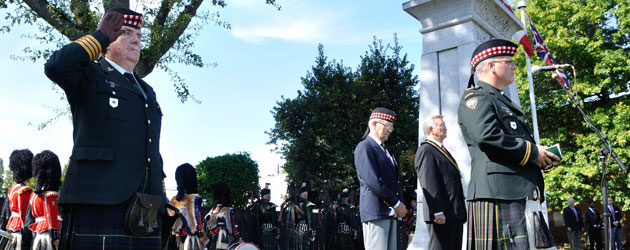
Honorary Col Richard Talbot, of The Canadian Scottish Regiment (Princess Mary's) salutes the Fallen, following a prayer by Chaplain Lt David Ferguson (right) during a ceremony of remembrance in Nanaimo.
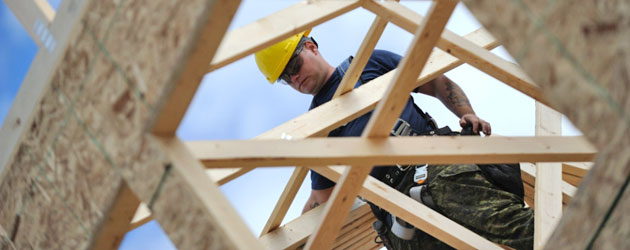
Cpl Judson Bettle of 191 Construction Engineering Flight works on the structure of the new house being built for a needy Comox family.
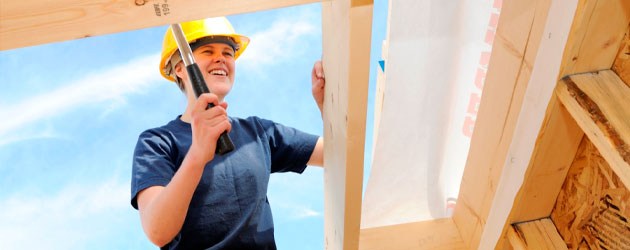
2Lt Christina Scott of the “Winged Women Warriors” team works on the second floor construction of the new house being built for a needy Comox family.

[caption id="attachment_2443" align="alignnone" width="300"] RAdm Jennifer Bennett has seen many changes to women's roles since she joined the military in 1975.[/caption] Canadian women have played an essential role in all the armed conflicts in which Canada has taken part for more than a century; but it was service in the First and Second World Wars that allowed women to slowly gain recognition as our nation saw increasing numbers of women proudly serving their country in uniform. Although these women did not set out to challenge society’s perceptions on the roles of women in the workplace, they blazed the trail for those of us serving today. While changes since the Second World War were impressive and comprehensive, considering the restrictions to service for women up to that time, there remained many barriers to overcome, and the navy I joined in 1975 was still very traditional in its thinking. I began my career as a Naval Communicator, but could only work in shore-based facilities as women were not allowed to serve in operational units including ships. The Naval Reserve was considered progressive in those days as females were given limited opportunities to go to sea for training but, only during the day in smaller class vessels. When I did navigation training as an officer, we sailed in YAGs, came into a port each afternoon, got on a bus and returned to Victoria to stay overnight on the base while the male Commanding Officer and crew stayed onboard. The next morning, we travelled to meet the ship and the same pattern repeated itself, but we had to stay within range of a bus trip back to Victoria. Women did not march in platoons with men because our uniform skirt was tapered and did not allow us to step out with the same...

[caption id="attachment_2439" align="alignnone" width="300"] The plaque commemorating CPO2 Boileau was placed on the bottom of the ocean at Sheppard Point.[/caption] Family, friends and military members paid homage to CPO2 Richard Boileau on Oct. 6 at the site of the diving accident that claimed his life on May 19. Five members of Fleet Diving Unit (Pacific) joined by HMCS Victoria’s Executive Officer, LCdr Christopher Holland, dedicated a memorial plaque to honour his life. The party was transported from Brentwood Bay to Sheppard Point where the plaque was later placed. “It was a beautiful day and a fitting tribute for Richard and his family,” said diver CPO2 Rob DeProy. Divers CPO2 DeProy and Richard Parker were with CPO2 Boileau during the accident in the waters of the Saanich inlet near Sheppard Point. In memory of their friend they dove to the ocean floor to lay the plaque. Before rising to the surface they touched the plaque and shook hands to honour their friend. “The plaque was laid in 18 metres of water in a place that is accessible to all levels of divers and will be enjoyed for years to come,” said CPO2 DeProy. Fleet Maintenance Facility foundry crafted the brass work for the plaque, an idea spearheaded by CPO2 DeProy. “Everyone agreed it was a fantastic gesture and the family thanked all who were involved. It was an emotional day for everybody; family were very appreciative of the work that went into it and thought that it was a good tribute,” said CPO2 DeProy. CPO2 Boileau was the coxswain in HMCS Victoria before his death. Before taking on the role of coxswain he served as a cook in HMC Ships Protecteur, Vancouver, Regina and Victoria in 2003. Shelley Lipke, Staff Writer
[caption id="attachment_2436" align="alignnone" width="300"] Lt(N) Ashley Logan, a volunteer doula for the MFRC, says doulas can relieve the stress of going through childbirth.[/caption] The Military Family Resource Centre (MFRC) helps military families, even before some family members are born. The MFRC provides the services of doulas, non-medical people who assist a mother and/or her partner before, during, and after childbirth. “We provide emotional and physical support to the parents,” says Lt(N) Ashley Logan, a volunteer doula with the MFRC. “No matter what the exact circumstances of the birth are, for a lot of people having an educated person there who has seen the process before can make such a huge difference to them.” Lt(N) Logan took a doula certification course while on maternity leave last year and has been volunteering with the MFRC as a doula since July. She says her favourite part is being able to give back to military families in the same position she was once in. “After I went through childbirth, I realized it’s a much bigger process than I thought it was,” she says. “I love being able to provide a supportive atmosphere for the mothers and their partners. It comforts them to know that I’ve been through it as well.” Doulas take an almost never ending number of workshops and courses to familiarize themselves with all the aspects of childbirth such as breastfeeding workshops, child birthing workshops, and courses on postpartum depression. “Our goal is to make both parties more comfortable any way we can,” says Lt(N) Logan. “That can mean helping the mother find more comfortable birthing positions, mentally preparing the husband for his wife’s caesarean birth, or even just staying with the mother so the father can go get a snack.” Lt(N) Diane Larose, a Public Affairs Officer currently on maternity leave, came across the MFRC’s doula program while pregnant with her first child. Of her two births, both have been at home, and both have been attended by a doula. The...

[caption id="attachment_2429" align="alignnone" width="500"] Raising of Hosaqami totem pole.[/caption] Raising of Hosaqami from Lookout on Vimeo.
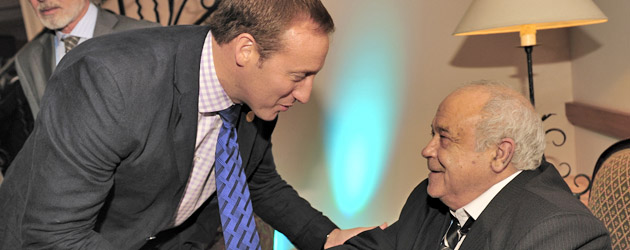
Peter MacKay, Minister of National Defence, shakes hands with Uruguay's Defense Minister Eleuterio Fernandez Huidobro during the 10th Conference of Defense Ministers of the Americas in Punta Del Este, Uruguay.
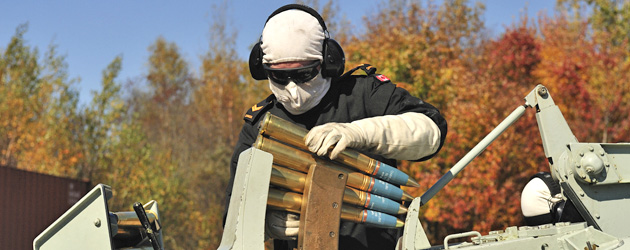
A sailor loads arms-length bullets into a Bofors 40mm anti-aircraft gun during the final stage of his Gunnery course at CFB Valcartier, QC.
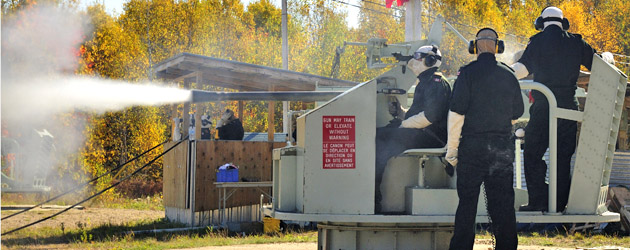
Sailors fire the big guns at the end of their gunnery course at Boffin range at CFB Valcartier, QC. The Bofors 40mm anti-aircraft guns are the main armament of Canada's Kingston-class coastal defence vessels.
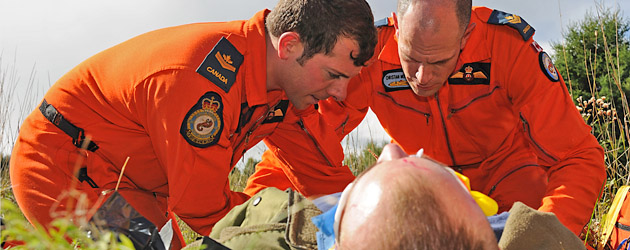
Search and rescue technicians, Master Corporals Anthony Vail and Christian Morrissette, from 442 Squadron in Comox, B.C., stabilize a mock patient during the National Search and Rescue Exercise (SAREX) 2012 near Val-d’Or, Quebec.
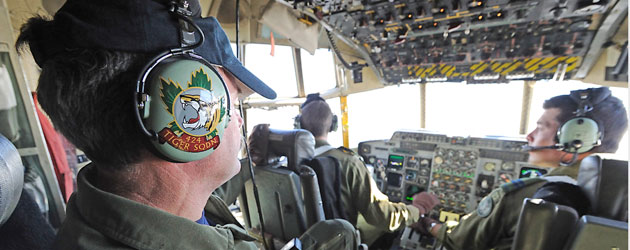
Flight Engineer, Sgt Brian Harvey, from 424 Transport and Rescue Squadron in Trenton, Ontario, sports a Second World War squadron patch on his headset while taking part in a training scenario for the National Search and Rescue Exercise (SAREX) 2012 near Val-d’Or, Quebec.
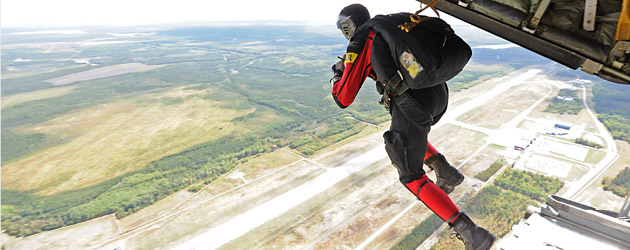
Search and rescue technician, Cpl Alex Neubauer, leaps off the ramp of a C-130 Hercules aircraft during the National Search and Rescue Exercise (SAREX) 2012 near Val-d’Or, Quebec.

HMCS Winnipeg sailors head to the prairies to connect with their ship's namesake city.

[caption id="attachment_2386" align="alignnone" width="300"] Naval Warfare: Arctic Circle is a real-time strategy game.[/caption] The future of naval warfare is unclear, but thanks to modern gaming we can guess. Naval Warfare: Arctic Circle is a Real Time Strategy game (RTS) by Turbo Tape Games that presents a realistic and engaging view of future naval combat. “It’s important to us, and we think what you see in the game is similar to what you can find in the real world,” says Jan Haugland, Chief Technical Officer of Turbo Tape Games. “We want weapon ranges, max speeds, sensor accuracy, and so on to reflect reality.” The game is set in the year 2030, and imagines a conflict in the North Atlantic, Arctic Ocean, and Baltic Sea, where melting polar ice caps have opened up the north for exploration and resource exploitation. With the current political climate and tensions over ownership of Arctic channels, this conflict doesn’t sound implausible. “There are certainly political differences between the NATO powers and Russia today, but I can’t imagine these nations would let it come to World War Three without nukes, which is basically what this game is,” says Haugland. “Luckily, I think, this scenario will remain in the world of fiction.” Though the game is set almost 20 years in the future, Haugland says the goal was to portray the future of naval warfare as realistically as possible. “We didn’t do this to have a game with science fiction units,” Haugland says. “All the ships, submarines and aircraft in the game, as well as the sensors and weapons employed, are real, either already operational or in advanced stages of development.” This allows Turbo Tape Games to include units that are well known such as the F-35 stealth fighter and the UK’s new Queen Elizabeth class aircraft carrier....
If you’re not fully utilizing half the talent in the country, you’re not going to get too close to the top. - Bill Gates
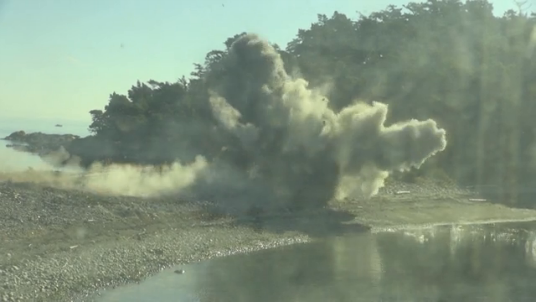
Seamanship Division Demolitions Course from Lookout on Vimeo.
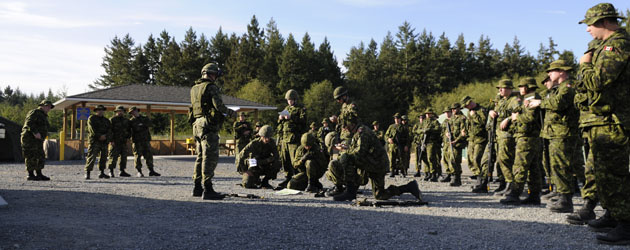
Thirty students taking their 7 week primary leadership qualification course took part in a two week training and test at Rocky Point's Forward Operation Base (FOB).
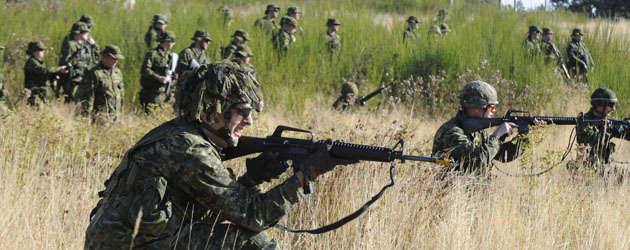
The PLQ is the toughest course in the Canadian Forces that anybody wanting to move through the ranks must do. Any Master Seamen and Master Corporal must take this training in order to obtain their ranks.
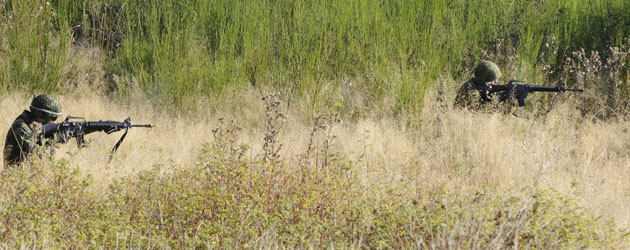
Students in the PLQ course participate in a section attack during a presence patrol.

A Canadian Forces member checks out one of the many booths at the Lookout Industrial Tradeshow on Sept. 22.

CF members browse the many products on hand at the Lookout Industrial Tradeshow at CFB Esquimalt.
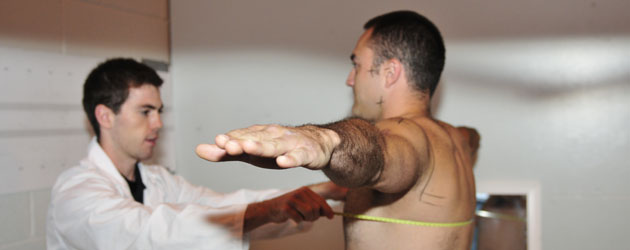
OS Scott Hickey, marine systems engineer student from Fleet School volunteered to take part in the 2012 Canadian Forces Anthropometric Survey.